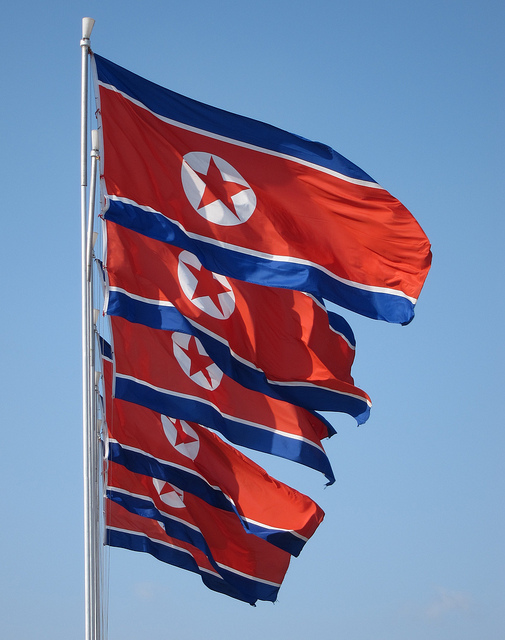
SEOUL, Korea, Republic Of — North Korea fired two unidentified projectiles off its east coast on Saturday, South Korea’s military said, a day after the North threatened to remain America’s biggest threat in protest of U.S.-led sanctions on the country.
It was the first such launch by North Korea in about a week. North Korea said last Saturday it had test-fired an unspecified new weapon in its sixth round of missile and other weapons tests in a response to regular U.S.-South Korean military drills.
The North had been expected to halt weapons tests because the 10-day U.S.-South Korean drills, which it views as an invasion rehearsal, ended earlier this week.
Saturday’s launches were made from the North’s northeastern South Hamgyong province, South Korea’s Joint Chiefs of Staff said in a statement. It said South Korea’s military is monitoring possible additional launches by North Korea, but gave no further details such as exactly what type of projectiles North Korea launched.
The Japanese government said North Korea appears to have fired missiles, but they caused no damage and did not land in Japanese territorial waters.
South Korea’s presidential office said it’ll hold an unscheduled meeting to discuss the North Korean launches.
North Korea’s foreign minister said Friday his country will try to remain “America’s biggest threat” if the United States continues to confront the North with sanctions. Foreign Minister Ri Yong Ho also called U.S. Secretary of State Mike Pompeo a “poisonous plant of American diplomacy” and vowed to “shutter the absurd dream” that sanctions will force a change in Pyongyang.
Ri’s blistering rhetoric and the projectile launches may dim the prospect for an early resumption of nuclear negotiations between the countries. The top U.S. envoy on North Korea, Stephen Biegun, said Wednesday that Washington was ready to restart the talks.
North Korea’s latest rhetoric over the U.S.-South Korean military drills had focused on South Korea, not the United States. The North Korean weapons tested during the drills were mostly short-range missiles and rockets. Some of the weapons revealed developments of a new rocket artillery system and two different short-range mobile ballistic missile systems that experts say would expand its ability to strike targets throughout South Korea.
U.S.-led diplomacy on North Korea’s nuclear weapons collapsed after President Donald Trump rejected North Korean leader Kim Jong Un’s demand for widespread sanctions relief in return for partial disarmament steps during their second summit in Vietnam in February. Trump and Kim met again at the Korean border in late June and agreed to resume the talks, but there has been no public meeting between the countries.
———
Associated Press writer Yuri Kageyama in Tokyo contributed to this report.